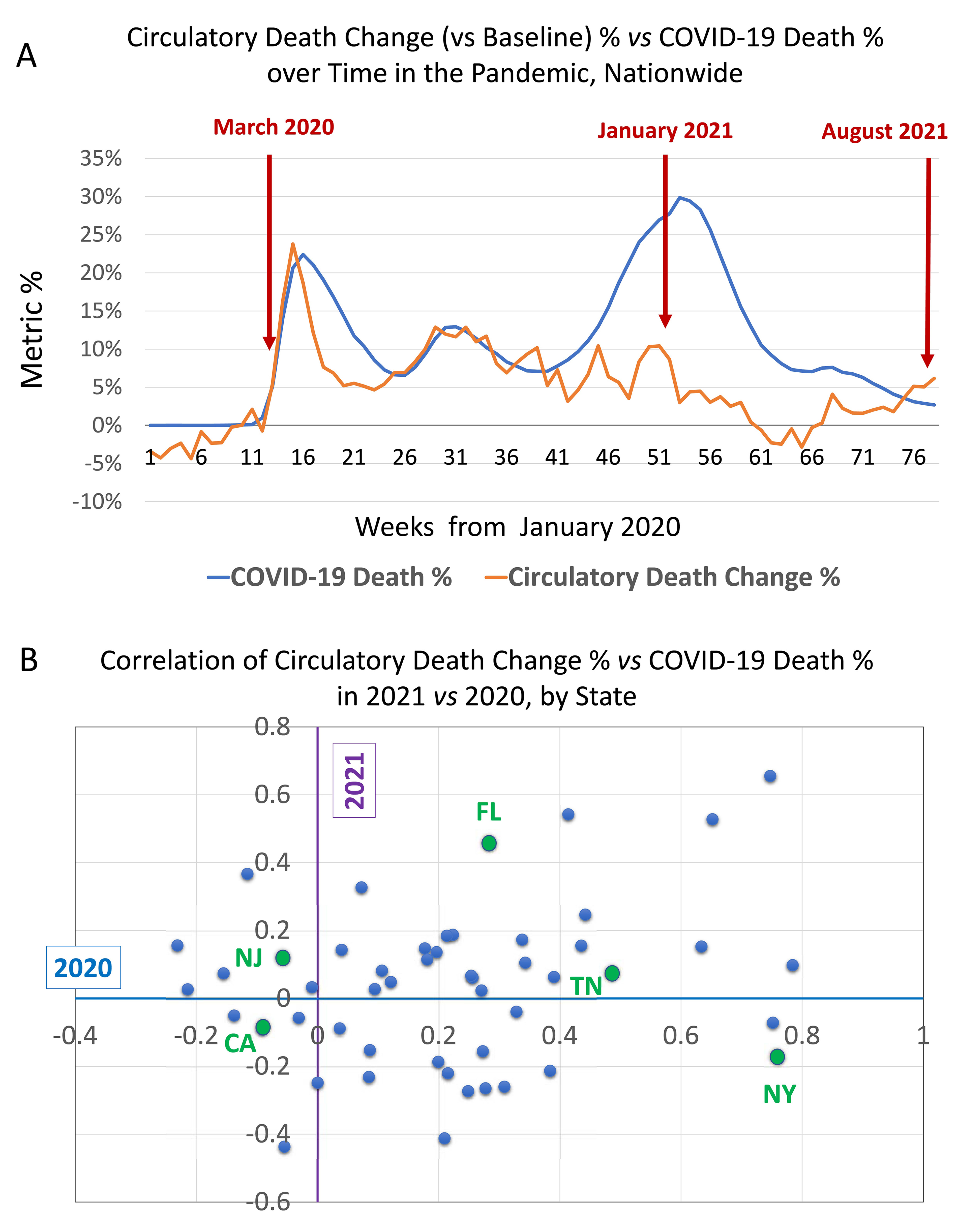Impact of the COVID-19 Pandemic on CMS Organ Procurement Organization Performance Metrics
1CareDx, South San Francisco, CA, 2Saint Louis University, St Louis, MO, 3University of Iowa, Iowa City, IA
Meeting: 2022 American Transplant Congress
Abstract number: 1319
Keywords: Cadaveric organs, Circulatory Death, Donation, Medicare
Topic: Clinical Science » Public Policy » 21 - Non-Organ Specific: Public Policy & Allocation
Session Information
Session Name: Non-Organ Specific: Public Policy & Allocation
Session Type: Poster Abstract
Date: Monday, June 6, 2022
Session Time: 7:00pm-8:00pm
 Presentation Time: 7:00pm-8:00pm
Presentation Time: 7:00pm-8:00pm
Location: Hynes Halls C & D
*Purpose: CMS introduced new performance metrics for Organ Procurement Organizations (OPO). CDC death records define donation eligible deaths, the denominator of the donation and transplant rate metrics. The COVID-19 pandemic has had an unprecedented and geographically varied impact on United States death statistics. Thus, we examined the potential impact of COVID-19 on the calculation of the OPO performance metrics.
*Methods: Eligible deaths include hospitalized decedents with “donation appropriate” diagnoses. We extracted death certificate data from the CDC WONDER system for baseline years (2015-2019) and the CDC COVID Data Tracker (after 2019). CDC aggregates data by state and broad disease groups including Circulatory Death (CD), death from Cerebrovascular Disease ICD-10 i60-i69 and Ischemic Heart Disease ICD-10 i20-i25. Deaths related to COVID (ICD-10 U07.1) were separately grouped. The proportion of CD during the pandemic was compared to baseline and correlated with COVID.
*Results: At baseline, CD accounted for 66.2% of OPO eligible deaths, increasing markedly in 2020 and 2021. (Figure A) The week of April 11, 2020, the national proportion of CD peaked at +23.8% over baseline, paralleling the dramatic increase in the proportion of deaths due to COVID (20%). Early in the pandemic, the proportion of CD and COVID deaths were strongly correlated (2020 r=.44). This attenuated over time (2021: r=.25). The CD and COVID death association evolved as the pandemic spread geographically. (Figure B) In 2020, the change in proportion of CD varied from New York (+20.6%) to Massachusetts (-6.5%). The COVID – CD correlation was highest in the Northeast and Florida, (New Jersey [.78], New York [.75] and Florida [.75]). By 2021, the change in proportion of CD was highest in Mississippi (+14.5%) and lowest in West Virginia (-28.6%), while the COVID – CD correlation diminished and spread west (Florida [.65], Tennessee [.54] and California [.53].
*Conclusions: Accurate eligible death assessment has been difficult, leading to a shift in calculations based on ICD-10 coded death certificates instead of OPO reported deaths. CD constitutes 2/3 of recorded donation eligible deaths historically, which has been substantially, but variably, impacted by the COVID-19 pandemic. Thus, these metrics based on CDC data may be sensitive to unanticipated and uneven shocks such as disease outbreaks, leading to inaccurate estimates of donor potential. CMS metrics should be refined to better account for external shocks such as the COVID-19 pandemic.
To cite this abstract in AMA style:
Dzebisashvili N, Lentine K, Axelrod D, Venkataramani K, Axelrod K, Schnitzler MA. Impact of the COVID-19 Pandemic on CMS Organ Procurement Organization Performance Metrics [abstract]. Am J Transplant. 2022; 22 (suppl 3). https://atcmeetingabstracts.com/abstract/impact-of-the-covid-19-pandemic-on-cms-organ-procurement-organization-performance-metrics/. Accessed January 2, 2026.« Back to 2022 American Transplant Congress

